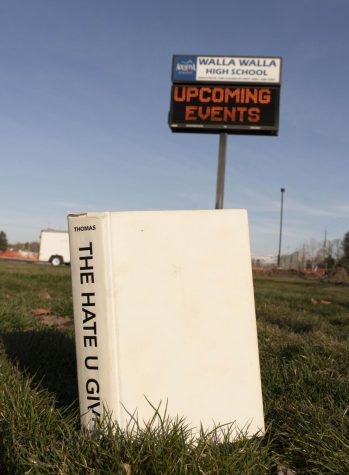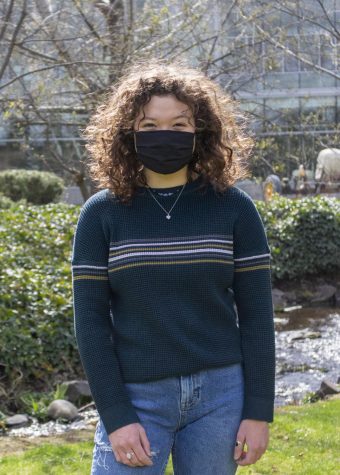Campus Climate Survey Offers A Starting Point
November 17, 2016
Numbers may add to Whitman’s ability to improve its campus climate.
Last spring, students, faculty and staff at Whitman filled out the anonymous campus climate survey administered in February of 2016. The Whitman Inclusion Diversity and Equity council (WIDE) used the general format of the campus climate surveys made by Rankin and Associates but modified the wording of specific questions to be understandable to those at Whitman college. When WIDE was created in spring of 2015, it was tasked with administering this survey and using the data gathered in its Diversity Strategic Plan, which looks to learn more about the experiences of different groups on campus and how to include them. In the past week, WIDE has invited Whitman students, faculty and staff to listening sessions where attendees can discuss the results and suggest other ideas that WIDE should focus on. The final listening session will be today, Thursday Nov. 17, from 4-5 p.m. in Maxey Auditorium. This survey and these sessions are meant to offer a starting point for the Whitman community to come together to address the areas where it lacks diversity, equity and inclusion.
Many members of WIDE were satisfied that 52 percent of students, faculty and staff who responded to the campus climate survey. Thirty percent is the minimum to have a representative sample and they thought 52 percent by far surpassed the minimum.
“The demographics of the [people] who took the survey matched pretty well the demographics of the campus … What you hope is the people who do fill it out are representative of your population, and then you try to generalize to that population using certain data. Our response rate was high enough that we can do that with our data,” WIDE Member Director of Institutional Research Neal Christopherson said.
WIDE Member Associate Dean for Student Engagement Noah Leavitt credited the high response rate to adapting the language used in the original Rankins and Associate campus climate survey to the Whitman community.
“The members of WIDE were able to adjust [the language] and the time spent thinking about how our community will hear this and how will they best be able to answer in a way that give us an ability to read the mood on campus–read people’s feelings of being included or not to get the most accurate data. And that took a long time,” Leavitt said. “But I think what we saw was incredibly resonate, relevant data which came through in part because of the upfront work that the committee did.”
From the climate survey, 28 percent of students reported that they felt uncomfortable or isolated on campus, and 60 percent had filed reports related to harassment that they felt was not dealt with properly.
Leavitt claimed he was surprised that the number of students who felt they did not belong on this campus was as high as 28 percent. Seeing that number made him realize the exigency in addressing this issue.
“I think that it points to the fact that there is a large amount of work the college can do to respond to that. I think as somebody in the student affairs department, being a student advisor and talking to a lot of students … I know that feeling is out there on campus, but to see it presented as a quantitative data point was a little bit intense for me,” Leavitt said.
Unlike Leavitt, WIDE member Associate Professor of Sociology Gilbert Mireles was unsurprised by the number of students who felt disconnected but agreed that it emphasized the need to address this issue.
“I appreciated that there is now data to address a concern to what had previously been mostly anecdotal stories about how some members of our community don’t feel included and don’t feel comfortable in certain settings on campus,” Mireles said.
Additionally, Mireles believed issues pertaining to sexual assault reporting were amongst the most important and feasible issues WIDE could focus on.
“It was a bit disheartening to see that some individuals who faced these experiences did not know what they could do or what avenues were available to them to address the situation. Something like that—in terms of clarifying processes, streamlining processes—potentially is a little bit easier to address,” Mireles said. “But I certainly believe that issues of access and inclusion can be addressed at the institutional level by revising or creating policies specific to issues of inclusion, equity and access.”
However, WIDE also wants community input on the results of the campus climate survey and matters the survey may have failed to address.
“WIDE is going to respond to what we hear coming in. It’s not as if WIDE has a particular agenda with what we think should happen. We wanted to … have the report to go out and people to work on it,” Leavitt said.
Even those who appreciated the data gathered from the survey recognized that in some instances Whitman’s small population was a limitation. For some individuals in marginalized groups, it was difficult to examine data about their experiences while preserving their anonymity.
“I think that among the most marginalized groups, they may or may not be represented in the sample. If they were, they may not necessarily be reported on because then you run the risk of being able to identify individuals,” Mireles said.
Despite its flaws, the campus climate survey did show some important places where Whitman should focus on improving inclusion and equity.
“Some groups are having more issues than others, and that’s what we need to work on … Now we know for sure. We can’t say we didn’t know you were having this problem … Now we can start addressing the places that need to be addressed,” Christopherson said.








